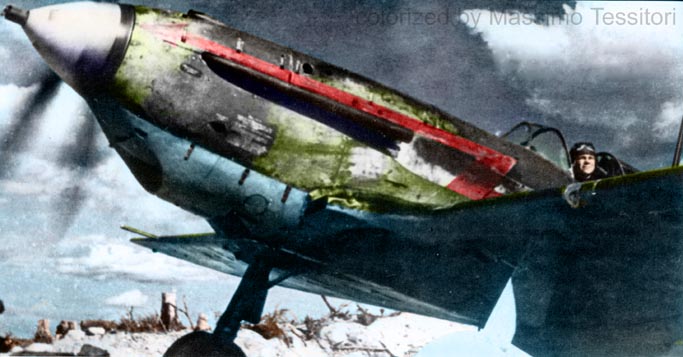
|
evolution of its painting scheme By Audrius Nairanauskas and Massimo Tessitori |
|
|

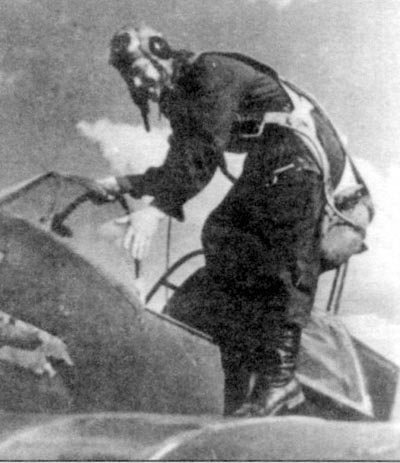 |
Here is an image of Captain V.P. Mironov on his LaGG-3, probably on
early 1942.
Captain V.P. Mironov was the commander of 609th IAP; he was an ace, having shooting down twenty-one enemy aircrafts. Later he was made Hero of the Soviet Union. |
|
|
The LaGG-3 of Mironov is probably an example of series 11, built in
early 1942.
It features are:
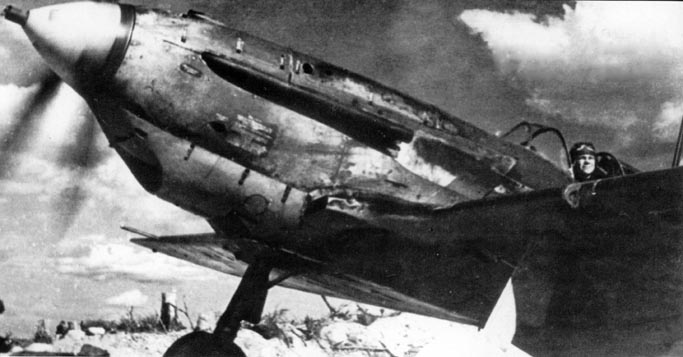 |
|
| The aircraft looks camouflaged with AII green/black camo scheme; the
black appears worn.
The aircraft is oversprayed with a bit of white winter color. The spinner is white and black. The prop blades are black. A large red arrow is on the fuselage side; its head is hidden by white paint. Red stars are both on the fuselage and on the stabilizer/rudder side, as well on wing undersurfaces. There should be a white 78 painted on the rear fuselage. The side panel behind the exhaust stack is without paint. Some stenciling is visible on the nose. |
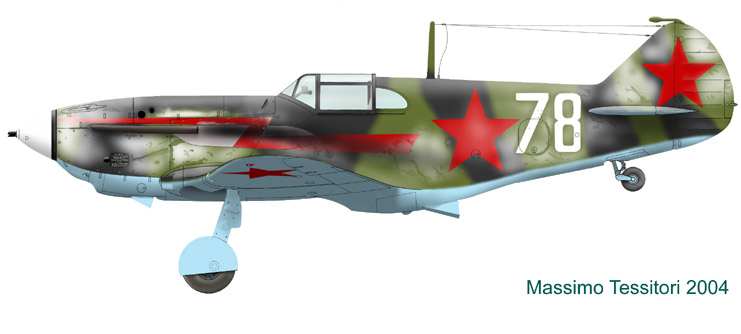 |
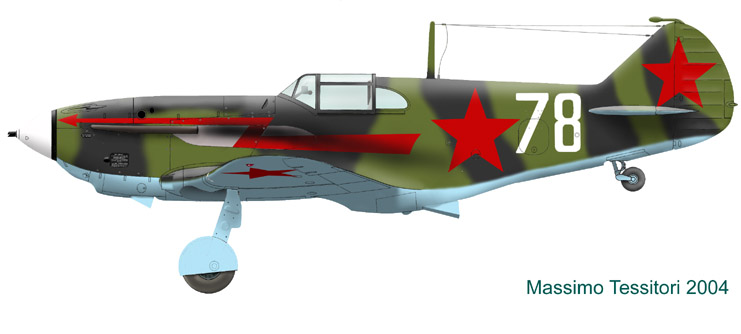 |
This profile is an obvious extrapolation from the previous one, representing the aircraft before the application of the white paint. |
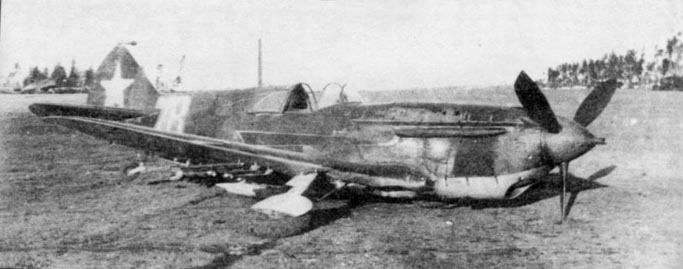 |
This hardly-landed LaGG-3 should be the same aircraft, after some months.
The photo shows stars with different colors, they can't be both red. In my opinion, the film is of the type that turns red into white, so the tail star could be red. The same for the arrow outline. Note the six RS-82 rockets and rails under the wings. The non-standard right UB and relative holes on the cowling sides are visible on the picture. Note the unusually small protection plate behind the exhaust stacks, perhaps a field arrangement. |
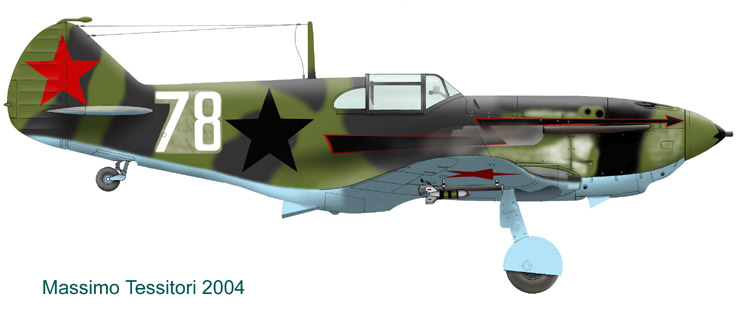 |
In my opinion, the aircraft was partially repainted in order to reduce
its brightness.
The camo on rear fuselage was partially repainted green/black, leaving a zone of green lightened by winter white around the number. The fuselage star, the arrow internal part and a red star on the spinner were repainted black. The white spinner was repainted green. Traces of winter white paint are still visible on nose panels. |
| I know that this interpretation is hard to be accepted, but it resists
well to criticisms.
I've measured the darkness k of some parts of this scan by instruments of Adobe Photoshop. On the nose, we see that the black of the arrow (k=80%) is slightly darker than that of the camo band (k=75%), that demonstrates that the arrow was black. We have to consider that red never appears darker than camo color on Soviet ww2 photos, except that on factory photos, where probably a different type of film was used. |
 |
|
|